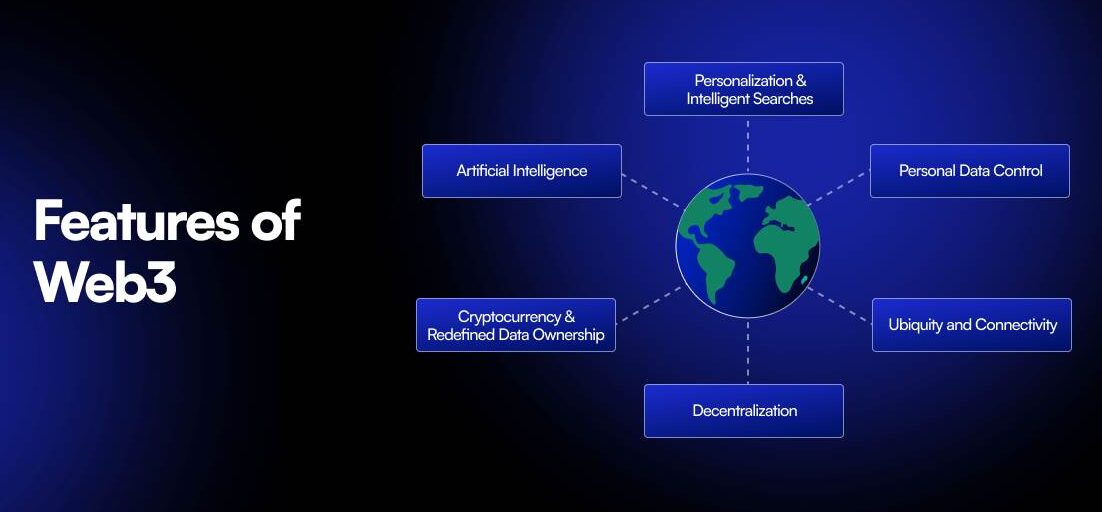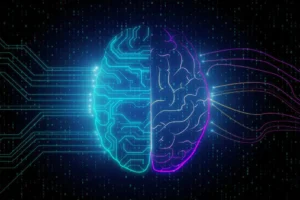Web3 and cryptocurrency represent a paradigm shift in how we interact with technology, finance, and data. This new digital landscape emphasizes decentralization, user empowerment, and innovative applications. In this post, we’ll delve into the essential components that make up Web3 and cryptocurrency.
What is Web3?
Web3 refers to the next generation of the internet, characterized by decentralized protocols and technologies that prioritize user ownership and control. Unlike Web2, which is dominated by centralized platforms, Web3 enables a more open and participatory online ecosystem.
Key Components of Web3
1. Decentralization: At the core of Web3 is the idea of decentralization. This means that data and applications are distributed across a network of nodes rather than being controlled by a single entity. This reduces the risk of censorship and enhances security.
2. Blockchain Technology: The backbone of Web3 is blockchain, a distributed ledger that ensures transparency and immutability. Blockchain enables secure peer-to-peer transactions without intermediaries, making it ideal for various applications beyond finance.
3. Smart Contracts: These self-executing contracts with the terms directly written into code allow for automated processes without the need for intermediaries. Smart contracts facilitate trustless transactions and enable the creation of decentralized applications (dApps).
4. Decentralized Applications (dApps): Built on blockchain networks, dApps operate without centralized control. They can range from finance (DeFi) to gaming and social media, offering users greater control over their data and interactions.
5. Interoperability: Web3 emphasizes the ability of different blockchains and platforms to work together. This interoperability allows for seamless asset transfers and data sharing, enhancing user experience across various applications.Understanding Cryptocurrency
Cryptocurrency is a digital or virtual currency that uses cryptography for security. It operates on decentralized networks based on blockchain technology. While Bitcoin was the first and remains the most well-known cryptocurrency, thousands of altcoins exist, each serving different purposes.
Key Components of Cryptocurrency
1. Tokens and Coins: Cryptocurrencies can be classified into two main categories:
• Coins: Native to their own blockchain (e.g., Bitcoin, Ethereum).
• Tokens: Built on existing blockchains and often represent assets or utilities (e.g., ERC-20 tokens on Ethereum).
2. Wallets: Digital wallets are essential for storing and managing cryptocurrencies. They can be software-based (hot wallets) or hardware devices (cold wallets) that provide varying levels of security.
3. Exchanges: Cryptocurrency exchanges allow users to buy, sell, and trade cryptocurrencies. These can be centralized exchanges (CEX) or decentralized exchanges (DEX), each offering different features and levels of control.
4. Mining and Staking: Mining involves solving complex mathematical problems to validate transactions and create new coins, primarily associated with Proof of Work (PoW) blockchains. Staking, on the other hand, involves locking up funds in a wallet to support network operations, typically in Proof of Stake (PoS) systems.
5. Decentralized Finance (DeFi): DeFi is an emerging sector within cryptocurrency that aims to replicate traditional financial services in a decentralized manner. It includes lending, borrowing, trading, and earning interest on crypto assets, all without intermediaries.The Future of Web3 and Cryptocurrency
As Web3 and cryptocurrency continue to evolve, we can expect to see:
• Greater Adoption: With increasing awareness and acceptance, more individuals and businesses will integrate cryptocurrencies into their operations.
• Enhanced Security: Ongoing advancements in blockchain technology and security protocols will further protect user data and assets.
• Innovative Applications: New use cases for dApps and cryptocurrencies will emerge, spanning areas like supply chain management, identity verification, and social networking.
• Regulatory Developments: As governments work to establish clear regulations, the landscape will shift, influencing how Web3 and cryptocurrency operate.Conclusion
Web3 and cryptocurrency are reshaping our digital experiences, offering unprecedented opportunities for innovation and user empowerment. By understanding the key components of this new ecosystem, individuals and businesses can better navigate the evolving landscape and harness the potential of decentralized technologies. Embracing Web3 could lead to a more inclusive and equitable internet for all.
Disclaimer: This content is for informational purposes only and should not be considered financial advice. Cryptocurrency mining involves substantial risks, including potential financial loss. Proceed at your own risk and conduct thorough research before investing.




